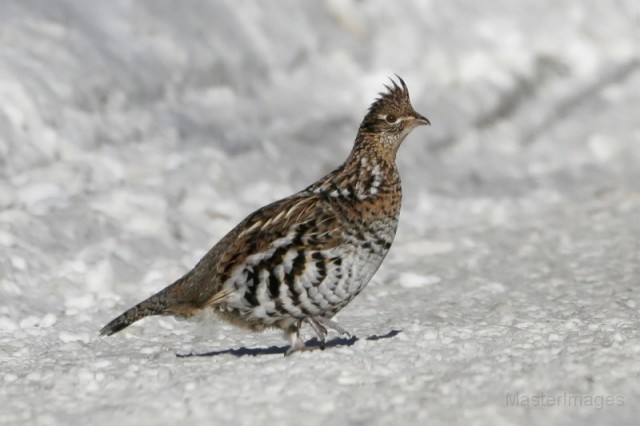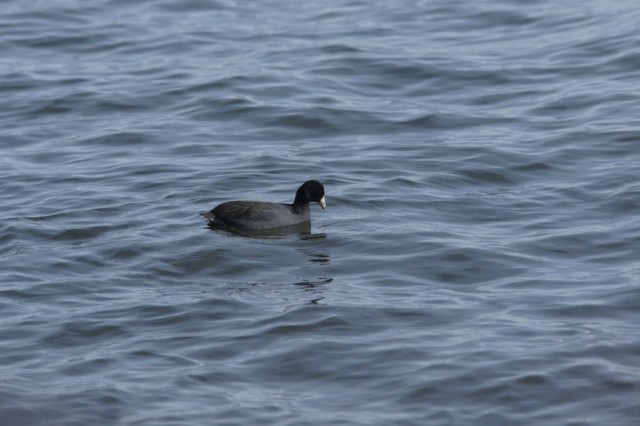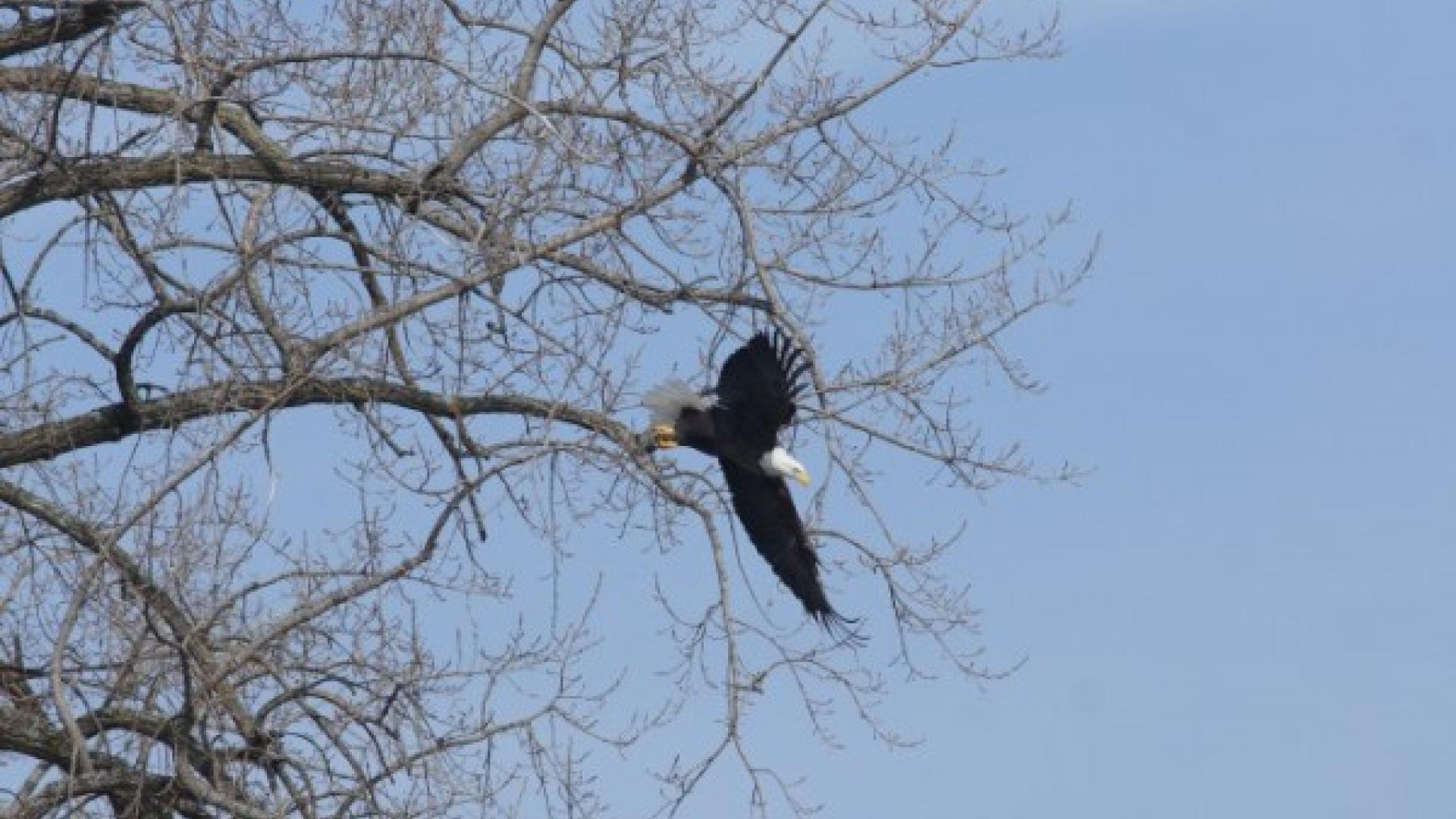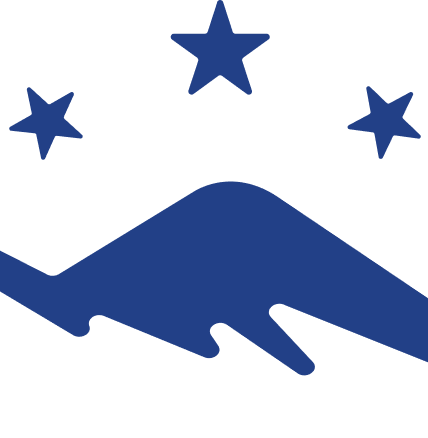A friend and I took a day this past weekend to go down to the Champlain Valley for some birding. We started at the Westport boat launch, where there was a nice group of ducks assembled. As ice has advanced north from the Champlain Bridge in Crown Point, the large group of ducks that was once there has been pushed into the open water further north in the lake. At Westport we found mallards, black ducks, common goldeneye, hooded and common mergansers, bufflehead, and a few lesser scaup.
We then checked out the area by the water treatment facility and there was another nice group of birds, this time with quite a few scaup mixed in. There were also good numbers of gulls on the sandy spit that extends into the lake, and after some scanning, I found an immature Iceland gull in the mix. Iceland gulls are an arctic species that comes south in winter and they are not commonly seen in the Champlain Valley. Iceland gulls also lack black wingtips and so get grouped with a few other species as "white-winged gulls."
A couple bald eagles cruised overhead and set the gulls in the air multiple times in succession – no bird wants to be sitting and exposed for an opportunistic eagle. As the flock took off we saw a glaucous gull – which somehow was hidden from view when the gulls were on the ground. Glaucous gulls are another white-winged species, and they are quite a bit larger than Iceland gulls. But as the gulls slowly returned, many of them left the area and we never found either white-winged species again.

We dropped south, cutting through the fields south of Westport and found a few wild turkeys, a ruffed grouse, and a red-tailed hawk. Then it was north towards Essex, where we checked out some more fields south of town. Our highlight there was a merlin harassing birds as a set of bird feeders – the feeders had attracted a nice collection of forest birds. The merlin nearly caught a house sparrow and then was gone to try elsewhere.
As we continued our route, there were nice numbers of ducks in Whallon Bay and the flock included a gadwall. There was also a group of ducks at the Essex ferry terminal where to our surprise we found an American coot which was overwintering.
We continued as far north as Willsboro, where we hiked into Noblewood Park and found large numbers of common goldeneye, but not much else besides a strong wind. The wind had been blowing consistently all day and seemed to be gaining strength, cutting through our layers as we stood scanning the water.

We headed home via Westport again where the boat launch area had even more ducks than it did on our first stop there. Good numbers of both greater and lesser scaup had arrived and they brought with them ring-necked ducks and the once famous common pochard, the Eurasian species with caused such a stir in January when it was first discovered. The bird is almost certainly an escaped bird from a private collection, so it attracts little attention now. But it was nice to find it and have a good view of it nonetheless – if nothing else but for the novelty of it – and with that we ended our day and headed home. We counted a total of forty four species on the ride home – not bad for a mid-winter trip.


